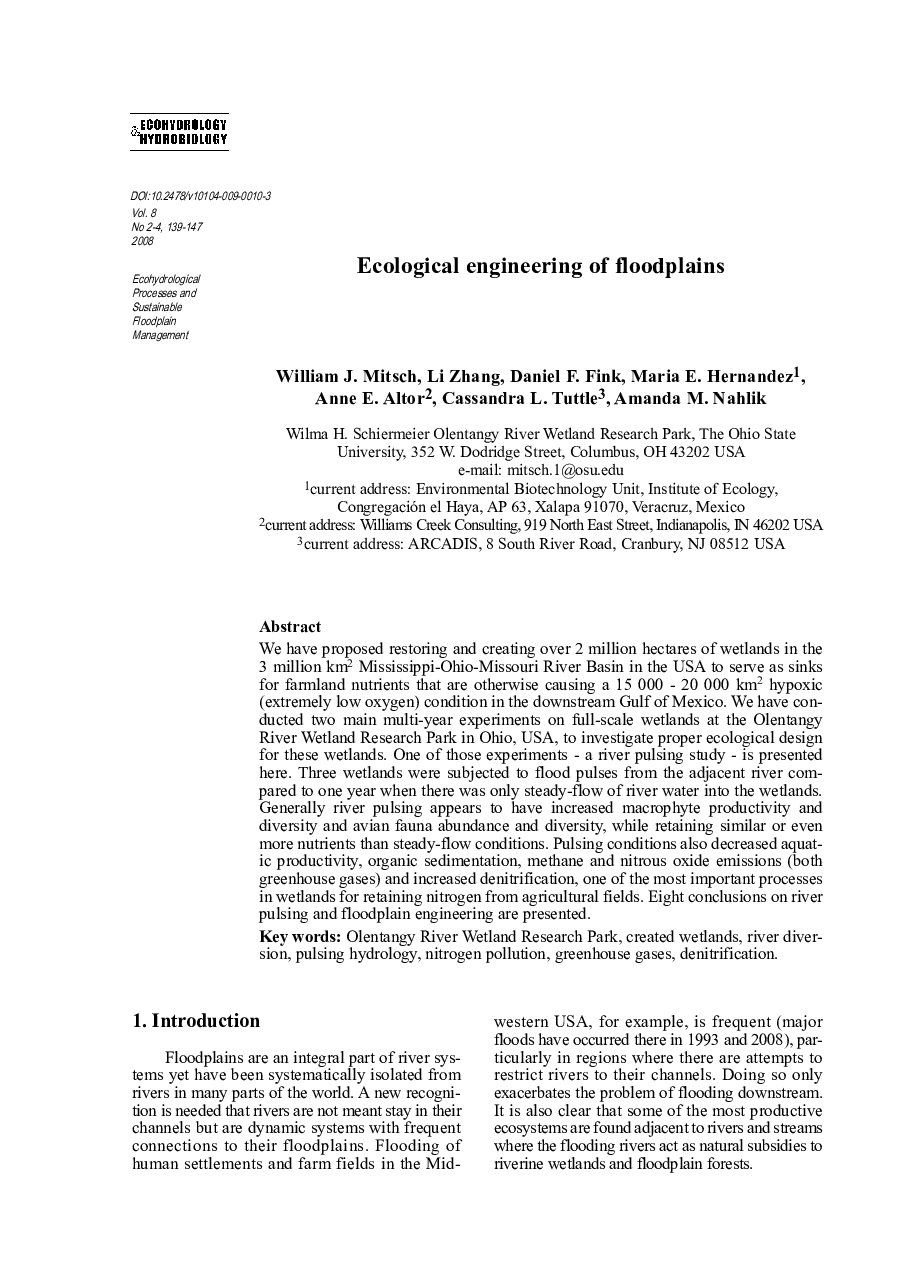| Article ID | Journal | Published Year | Pages | File Type |
|---|---|---|---|---|
| 4388233 | Ecohydrology & Hydrobiology | 2008 | 9 Pages |
We have proposed restoring and creating over 2 million hectares of wetlands in the 3 million km2 Mississippi-Ohio-Missouri River Basin in the USA to serve as sinks for farmland nutrients that are otherwise causing a 15 000 – 20 000 km2 hypoxic (extremely low oxygen) condition in the downstream Gulf of Mexico. We have conducted two main multi-year experiments on full-scale wetlands at the Olentangy River Wetland Research Park in Ohio, USA, to investigate proper ecological design for these wetlands. One of those experiments - a river pulsing study - is presented here. Three wetlands were subjected to flood pulses from the adjacent river compared to one year when there was only steady-flow of river water into the wetlands. Generally river pulsing appears to have increased macrophyte productivity and diversity and avian fauna abundance and diversity, while retaining similar or even more nutrients than steady-flow conditions. Pulsing conditions also decreased aquatic productivity, organic sedimentation, methane and nitrous oxide emissions (both greenhouse gases) and increased denitrification, one of the most important processes in wetlands for retaining nitrogen from agricultural fields. Eight conclusions on river pulsing and floodplain engineering are presented.
